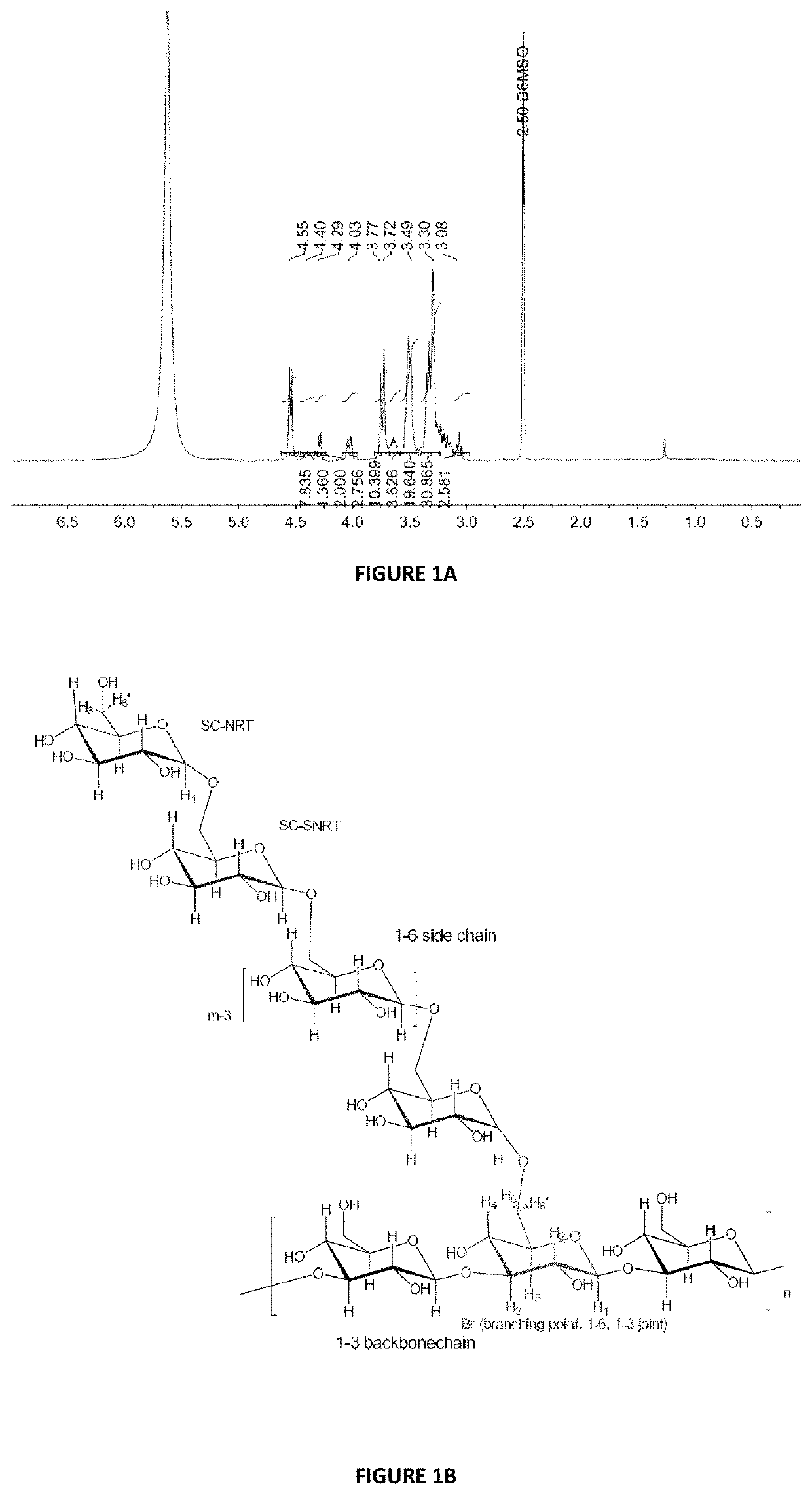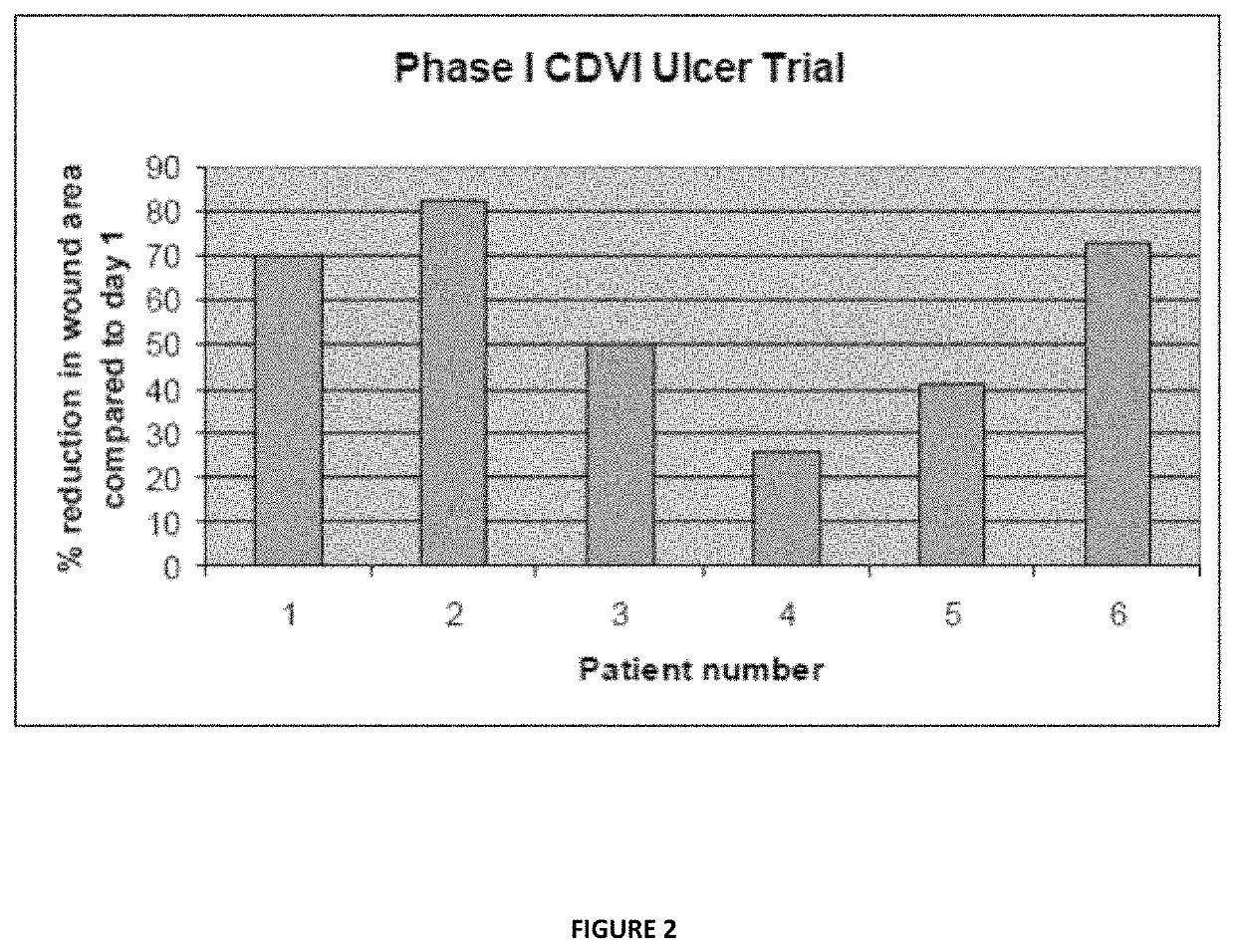Method of making a beta glucan compound
a technology of beta glucan and compound, which is applied in the direction of drug composition, plant/algae/fungi/lichens ingredients, and aerosol delivery, etc., can solve the problems of -glucans not obtaining drug or biological approval for indications in wound healing, hampered search, and skin quality degradation, etc., to accelerate accelerated skin quality and healing benefits
- Summary
- Abstract
- Description
- Claims
- Application Information
AI Technical Summary
Benefits of technology
Problems solved by technology
Method used
Image
Examples
working examples
[0205]The above described polysaccharide compound, methods of use and methods of manufacture thereof are now described by reference to specific examples.
example 1
[0206]Table 1 below shows the full characterisation of the isolated biological polysaccharide compound described above.
[0207]
TABLE 1Biological Polysaccharide Compound CharacterisationTestTest MethodSpecificationTest resultAppearanceVisual examinationWhite to slightlyCompliesoff-white powderIdentificationH NMR APFP - 1023Complies withSee example 3standard H NMRspectrum of theisolated biologicalpolysaccharideAssayTotal Hexose PTM26>90%GlycosylAnalysis by gas65%See example 2linkagechromatography-1:3 linked glucopyranosyl residue 67.7%analysismass spectrometry1:6 linked glucopyranosyl residue 12.7%(GC-MS) as1:4 linked glucopyranosyl residue 4.4%described by Heiss3:4 linked glucopyranosyl residue 0.3%et al. (2009)2:3 linked glucopyranosyl residue 2%Carbohydr.3:6 linked glucopyranosyl residue 6.3%2:6 and 4:6 linked glucopyranosyl residue 0.6%3:4:6 linked glucopyranosyl residue 0.2%Terminal linked glucopyranosyl residue 5.8%Assay-Gel PermeationWeight Average1 MDaMolecularChromatographyMola...
example 2
[0208]In this example, the method and results from a glycosyl linkage analysis are described used to help characterise the isolated biological polysaccharide compound described herein.
Method
[0209]For glycosyl linkage analysis, the sample (1.2 mg) was first dissolved in 400 μL of DMSO. The sample was then permethylated, depolymerized, reduced, and acetylated; and the resultant partially methylated alditol acetates (PMAAs) were analysed by gas chromatography-mass spectrometry (GC-MS) as described by Heiss et al. (2009) Carbohydr. Res. 344:915.
[0210]Permethylation was performed by two rounds of treatment with 400 μL of sodium hydroxide (15 min) and 100 μL of methyl iodide (45 min). 2 mL of water was added to quench the reaction, and the excess methyl iodide was removed by a stream of nitrogen. Following extraction with dichloromethane, water wash (3×), and solvent removal, the permethylated material was hydrolysed using 2 M TFA (400 μL, 2 h in a sealed tube at 121° C.), reduced with Na...
PUM
| Property | Measurement | Unit |
|---|---|---|
| pH | aaaaa | aaaaa |
| pH | aaaaa | aaaaa |
| specific gravity | aaaaa | aaaaa |
Abstract
Description
Claims
Application Information
 Login to View More
Login to View More - Generate Ideas
- Intellectual Property
- Life Sciences
- Materials
- Tech Scout
- Unparalleled Data Quality
- Higher Quality Content
- 60% Fewer Hallucinations
Browse by: Latest US Patents, China's latest patents, Technical Efficacy Thesaurus, Application Domain, Technology Topic, Popular Technical Reports.
© 2025 PatSnap. All rights reserved.Legal|Privacy policy|Modern Slavery Act Transparency Statement|Sitemap|About US| Contact US: help@patsnap.com



